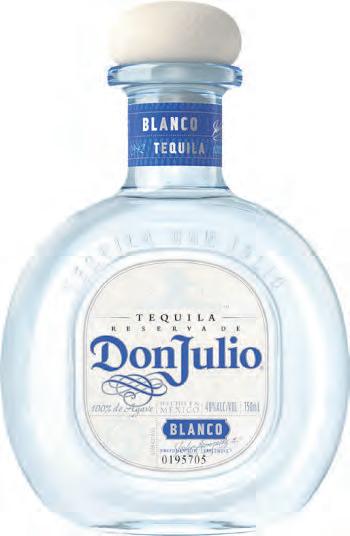
3 minute read
ONEOFTHEIR OWN
Thelabmanagers couldn’t imagineanyonebeingthat sloppy Evenin 1984,before anyoneknew anythingaboutsupersensitive DNA testing,criminalists understoodtheyhad to be careful.
Butthesupervisorstrying to figure allthisout weren’t in the labbackthen,whenit was not justin a differenterabutina differentbuilding.Theydidn’t know how thesemen standards were stored orhow thecriminalists cleanedtheir tools,or even whethertheyalways wore masks orgloves.
Advertisement
Theydidn’task,either becausetheydidn’t want word of Brown’s DNAhitspreadinginthe office.
Theydidknow this,however: Brown wasn’ttheanalystwho examinedtheHough evidencein 1984.That was JohnSimms,a criminalist respectedbyhispeers forhisthoroughness.
Simms,stillinthelaband servingasitsquality assurance officer, was mortifiedbytheidea that somethinghe’d donemight have messedthings up.Hadhe used Brown’s semenstandard instead of his own?He toldShen hedidn’tthinkso, althoughhe couldn’t recall workingthecase. There had beensomany overthe years.
Thelabmanagers were ina quandary. Should they tellthe cold-casedetectivesabout Brown’s DNA,orwrite it off as contamination, even thoughthey doubtedthat’s whathappened?
Dismissingit wouldallow police to tie Tatro,the convictedrapist, in a tidyforensicbow.
Shenandtheothersdecided to putitallonthetable.Let detectivesinvestigate. Maybe they would findmore evidence tying Brown to thecrime. Maybe they would connecthim to Tatro, figure outhow the two ofthem woundup togetheronthebeach with the girl. Maybe they would findmore reasons to suspect contamination.
“We were in a very difficult spot, recalled PatrickO’Donnell, thesupervisor in charge ofDNA testing.“We needed to disclose this resultbutdoitin a way that provided a complete set of explanationsas to why we are seeing this result.That was our obligation. “Had wecovered upthis result,andthenthreeyearslater there isadditional evidencethat KevinBrown somehow wasa serial killer, then wewouldnot have doneourduty.”
Theideaof a serialkiller wasn’tidlespeculation.Six years before Hough’s murder another teen,Barbara Nantais, 15, had beenmurderedonthesame beach, and in thesamemanner: sexually assaulted,beaten,mutilated,strangled. Herslaying was unsolved, too.
Normallycriminalistsletdetectives know byphone whenDNA results are in. Thistimethey diditinperson. Themeeting was heldinthe fallof2012 in a locationthat spoke to how thornythecase was: aconference roominthepolice chief’s office. Shen attended,alongwith O’Donnell.Rydalch,the coldcasedetective, was there withhis boss. No written record ofthemeetingisknown toexist Thelab managers would saylaterthat they toldthedetectivesthis: Theybelieved contamination had notoccurred,thatit wouldhave required a “colossalbreach of protocol,”butthey couldn’t ruleit out.It’s alwayspossible.
That’s notwhatthedetectives heard.Theyleft themeeting certain that thescientistshad exploredandeliminated contamination,leavingonlyone explanationforBrown’s sperm:sexual contact.
Andthat’s themessage they passed along a few dayslater to detective Michael Lambert,who had just joinedthe cold-case
SANDIEGOPOLICEDEPARTMENT team.HeinheritedtheHough file fromRydalch,who was retiring.
Longafterhe’dlefttheforce, KevinBrownstored hisSDPDbadgewithother keepsakesinhisChula Vistahome.“Helovedhisjob,”according to his wife,Rebecca,but composureproblemshehad while testifyingin courtderailedhis career.
TOP: KevinBrown,photographedatacrimescene in 1991, workedasacriminalistforthe SanDiego PoliceDepartmentfor20 years,leavingadecade beforeDNA resultsimplicatedhiminthemurder ofClaireHough.His reputationwithhislab colleagues wasmixed.
BorninBerlin, thesonofan Army soldier, Lambert grew up ontheEastCoastand joinedthe Navy after graduating from high school.Heserved five years and then joinedtheSanDiego police academyin 1989 at age 25.
He’d wanted to be a cop since childhood —a friend’s uncle was anofficer butnot justany cop. On the firstdayoftheacademy, when recruits stand up and share theirhoped-for futures,hetalked aboutbecominga homicide detective.
About 12 yearsinto hiscareer, he got hiswish.He’d done stints bytheninpatrol,narcoticsand as a generalistinthedetective pool.He workedmurdersfor about a decadebefore moving to the cold-case team.
Heimmersed himselfinthe Hough file,which numbered thousandsofpages.Helearned that the teen was fromCranston, R.I.,the youngestof two children in a middle-classfamily. She was entering 10th grade,a bright girlwhodidn’tcare much forschool.Shelikedpoetry and thebandsKissand Van Halen. She wouldstickupforpeopleshe thought were beingpickedon, andsometimes do orsaythings to shockothers.Shesmoked Marlboro Lightsandhada boyfriendbackhomewho was four yearsolder. In August 1984,Houghcame out to SanDiego witha friend. TheystayedinDel Mar Heights with Hough’s grandparents,a 15-minute walk from TorreyPines State Beach, which they visited almostdaily Theysaton towelsonthesand neara bridge,listening to music from a portableradio/cassette recorder.
Her friend returned to Rhode Islandafter theyhadbeen here for abouta week. Withouther companion,Hough toldher grandparentsshe was bored.On thenightshe was killed, she slipped undetectedoutofthe houseand walked to thebeach, stoppingat a Circle K to buy cigarettes.Theclerk there thoughtshelooked20, not 14.
Around 5 thenext morning,a man collectingaluminumcanson thebeach swepthis flashlight acrosswhatheassumed was someonesleeping.She was onher rightside,on a white towel,her sandalsoff. Whenhesaw the blood,hecalledpolice.
Thebeachcomber’s name was Wallace Wheeler,a self-proclaimedpsychicwithschizophreniawhohad recently beenarrestedas a “peeping Tom.” Police consideredhim a suspect especiallyafter hebegansending weeklyletters to Hough’s parents, sharingvisionshehadofthe killeras a long-hairedmanwho was missinganear.
Attheurgingofdetectives,the Houghsplayedalongfor a while, incase Wheeler decided to confess Henever did.
Four yearslater hekilled himself, jumping fromthe 13th floorofanapartmentbuildingin SanDiego.
Theforensiclab’s doubleDNAhitleft Lambert withquestionsashebegan to investigate:How did Ronald Tatro,a convictedrapist,and Kevin Brown, a former policeemployee with nocriminal record, ever meet,letalone commit a murder together?
Or were theylone wolveswho justhappened to preyonthe same girlatthesameplaceatthe same time?
The detective flew to Minnesota to interview the friendwho hadbeeninSanDiego with Hough.Heshowed herphotosof the two men,taken aroundthe timeofthekilling,when Tatro was 40andBrown was 32.
Shedidn’t recognize either one Lambert showed her a photo ofthevan Tatro was drivingback then— nothingthere,either.
The friend,Kimberly Jamer, toldhimHough was faithful to herboyfriend theytalked about everything, shesaid and wouldnothave beeninterestedin menthatold.The only people theymetinSanDiego were teens aroundthesameage hangingout atthebeach,andthat was justin passing.
Lambert andhispartner Lori Adams,lookedinto Tatro’s history BorninElmhurst,Ill., he made it through the 10th grade before droppingoutandlater earning a GED He was divorced andhad two children.Heserved six yearsintheArmy, in two separate stints,andblameda “run-in hehadwith a female servicememberforhissubsequent crimes.
In 1974, in Arkansas, helureda store clerk to hiscar shoved her inthe trunk anddrove to an isolatedarea.Hestuck a knifein hermouthandrapedher Prior to being arrested,he went to a psychiatric clinicinHotSprings, tellingthedoctorthis wasn’this firstoffense andthat hehadno control overhis compulsions. Sentenced to 40 years,he served eightand was paroled to SanDiego,where hissisterlived. He worked as a handyman,doing maintenance work forapartment ownersand realestate agents.
InSeptember 1984,onemonth after Hough was murdered, Tatro was investigated bySanDiego
















